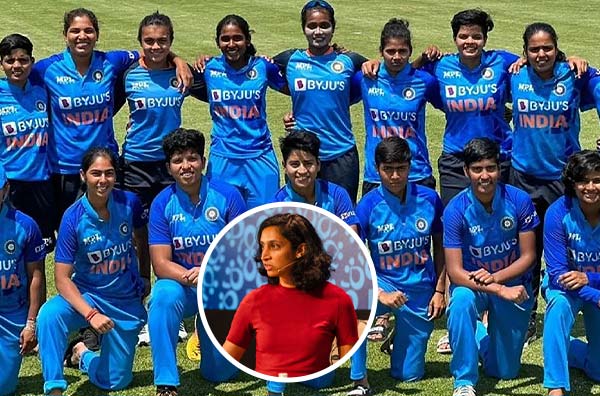The ICC U19 Women’s T20 World Cup marked a historic milestone in women’s cricket, delivering on years of planning and anticipation. Held in South Africa in January 2023, the inaugural edition proved to be a resounding success.

Originally slated for January 2021 in Bangladesh, the tournament faced delays due to the Covid-19 pandemic, ultimately becoming part of a double-header event with the ICC Women’s T20 World Cup the following month.
This groundbreaking event not only showcased young talent but also demonstrated the global growth of women’s cricket, setting the stage for the future.
The creation of the U19 Women’s T20 World Cup reflected a commitment to ensuring parity between men’s and women’s cricket. For Snehal Pradhan, the ICC’s manager of women’s cricket, the tournament was a testament to years of hard work and dedication.
“I have to give credit to those who came before me at the ICC. The Under-19 tournament has been a tournament that has been in discussion for a number of years and so many people, primarily our events team and the board who had the vision to commit to the tournament at this age, need to be acknowledged. The ambition was around opportunity and quality,” Pradhan stated.
The competition began with a major upset when Bangladesh defeated Australia in the opening match, setting the tone for an unpredictable and high-quality tournament.
India emerged as strong contenders, featuring senior international stars like Shafali Verma and Richa Ghosh. Their inclusion added a unique dynamic, with Verma leading the team in what became a landmark achievement for Indian women’s cricket.
“The positioning of the tournament across men’s and women’s is future stars because this is a tournament that allows a number of players to make their name at Under-19 level before going on to play high-level international senior cricket,” said Pradhan.
“For someone like Shafali Verma, she got the chance to lead the team and get captaincy experience, which she wouldn’t be close to at senior level, that was fantastic. The fact that she was able to lead India to a first ICC trophy on the women’s side was icing on the cake as far as the storyline. It’s huge for the tournament to be able to produce stars but also have stars coming in.”
India’s journey was marked by dominance in the group stage, followed by a thrilling semi-final victory against New Zealand. The final saw India claim a historic win, defeating England by seven wickets to secure the title.
The tournament’s impact extended far beyond India, with several players showcasing their potential on an international stage. Georgia Plimmer of New Zealand, for instance, made a significant impression, later starring in the Women’s T20 World Cup final in Dubai in 2024.
“It’s fair to say that Georgia Plimmer, if she hadn’t had the opportunity on the international stage that she got with New Zealand, may not have been fast-tracked into the senior team as quickly,” Pradhan explained.
Players like Milly Illingworth, Theertha Satish, and others also benefited from this platform, accelerating their transition to senior-level cricket and solidifying their roles in their respective teams.
Beyond the action on the pitch, the ICC introduced a groundbreaking initiative to protect female players from online abuse. This social media protection structure was developed in collaboration with the players, addressing a critical issue faced by women athletes worldwide.
With 16 teams participating, the tournament also set a new benchmark as the largest women’s cricket event ever organized by the ICC.
The upcoming edition in Malaysia aims to build on the success of the inaugural event, fostering further growth and development in women’s cricket.
“It was a fantastic success. It was very much a commitment to equity between the men’s tournament and the women’s tournament but also a leap of faith,” Pradhan emphasized.
“Countries were still maturing in how developed their women’s and junior pathways were so it was a chance to see the work that the countries have been putting in over the last few years. Having 16 teams was a fantastic starting point in the first place and this will drive more progress in those countries.”
The ICC U19 Women’s T20 World Cup 2025 in Malaysia follows a competitive and engaging structure designed to test teams at every stage. The 16 participating teams are divided into four groups of four, playing each other once in the group stage.
The top three teams from each group advance to the Super Six League stage. Here, qualifying teams from Group A compete against two teams from Group D, while Group B teams face off against two from Group C. Importantly, points earned against fellow qualifiers in the first group stage are carried forward, ensuring every match counts.
The Super Six phase will culminate in the top two teams from each league advancing to the semi-finals. The tournament concludes with the grand final, scheduled for 2 February 2025, promising a thrilling finale to this global showcase of young talent.
(Quotes sourced from ICC media release)

Loves all things female cricket